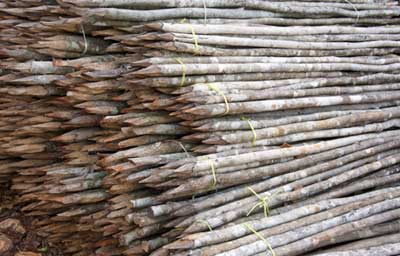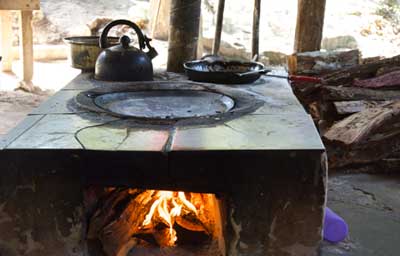Módulos agroforestales y restauración ecológica en la reserva El Zapotal

En el año 2002, con apoyo de TNC y Consejo Norteamericano de Conservación de Humedales (NAWCA), Pronatura realiza la compra de 2,358 hectáreas de selva en el Municipio de Tizimín cuyo objetivo principal sería la conservación de hábitat de importancia para las aves, así como mitigar la presión de la frontera agropecuaria sobre la adyacente Reserva de la Biosfera Ría Lagartos, y a partir de 2006 la Reserva El Zapotal está registrada como área voluntaria de conservación con vigencia a perpetuidad a través de la CONANP. Con el tiempo, Pronatura ha ido adicionando más tierras a El Zapotal que actualmente alcanza una superficie de 4,100 hectáreas en cuatro secciones. En conjunto con la academia se desarrollan actividades de investigación, entre ellas estudios de flora en convenio con el CICY, monitoreo de aves, y estudio de la población de jaguares con el Instituto de Ecología de la UNAM. La superficie analizada no se limita al polígono de la reserva, sino que abarca unas 52,000 hectáreas en conjunto con ejidos colindantes. Pronatura es el prestador de servicios técnicos para varios ejidos de la zona de influencia en temas como pago por servicios ambientales, reforestación, desarrollo rural sustentable y prevención de incendios forestales. A partir del año 2013, en conjunto con CONAFOR, Pronatura inicia un proyecto de restauración del paisaje forestal en la reserva, y en el marco de la iniciativa REDD+ incorpora un proyecto de sistemas agroforestales en el ejido El Limonar, contiguo a la reserva. En conjunto, ambas actividades apuntan a restaurar el paisaje original dentro de la reserva y promover un manejo productivo con la incorporación de árboles en las zonas de amortiguamiento fuera del polígono de la reserva. Leyla Ucán Dzul, presidente del comisariado ejidal de El Limonar, comunidad contigua a la reserva, cuenta que sus padres y abuelos trabajaban la tierra durante dos años, luego el suelo comenzaba a producir menos y entonces pasaban a otras tierras, pero para eso había que deforestar. La zona de El Limonar había sufrido un incendio poco antes de que Leyla llegara a estas tierras, y al comenzar a cultivar su milpa lo hizo con una nueva modalidad: un sistema agroforestal que hasta hoy no ha dejado de producir. Al recorrer su área de cultivo se puede ver líneas de maíz y frijol intercaladas con palmas de coco, limoneros, árboles de naranja y especies forestales como ramón, huaxín, ciricote, tzalam y chacah. “Con el tiempo habrá que ir adaptando otros cultivos”, comenta Daniel Jiménez, responsable del programa de restauración y desarrollo rural sustentable de Pronatura, “ya que los árboles irán creciendo y probablemente el maíz no tenga los mismos rendimientos debido al sombreado”. Para ese entonces, los cítricos ya estarán en plena producción, el huaxín servirá para corte y alimento del ganado, el ramón tiene muchos usos maderables y no maderables, y los cercos vivos de chacah se podrían usar como tutores de pitahaya. Son ingresos que combinados pueden proveer un sistema rentable, y El Limonar ya es un caso de éxito en agroforestería.
A escasos metros del poblado de El Limonar se puede ver un bosque secundario de aproximadamente 20 años, y abriéndose camino entre el monte se va ingresando al área de la reserva El Zapotal. Una vez dentro, es difícil imaginar que el paisaje era un potrero ganadero unos 10 años atrás. Hoy es un bosque secundario que ha tenido una rápida recuperación gracias a la intervención del programa con brechas corta fuegos, reforestación y manejo de acahuales. De esta manera, la restauración dentro de la reserva, y la implementación de sistemas agroforestales en su zona de influencia, comienza a transitar el camino hacia la recuperación de un paisaje lo más similar al original que sea posible. En los inicios del proceso de reforestación en 2008, las plantas no tenían buena sobrevivencia. Se consideró que podría deberse tanto a la sequía de ese año, como a que los árboles eran provistos por viveros de CONAFOR con germoplasma que no se adaptaba bien a la zona. Se propuso un apoyo para una red de viveros comunitarios, y una vez iniciado el trabajo de los viveros locales el éxito de sobrevivencia de plántulas fue en aumento. El trabajo de los viveros es fortalecido dentro de El Zapotal con una colección de plantas vivas del banco de germoplasma con cien especies nativas de importancia tradicional, cultural y maderable, cuyos recursos fueron provistos por CICY y PNUD. Un momento muy importante en el proyecto de restauración fue en 2013 cuando se logró acceder al programa de pago por servicios ambientales en los ejidos donde se ha realizado con CONAFOR, ya que esto permitió cubrir costos de operación, mayor vigilancia de los árboles plantados, cercado de áreas que pudieran ser susceptibles de pastoreo de ganado, apertura de brechas corta fuego y monitoreo biológico.
Otro proyecto importante en el área de restauración es el de manejo de acahuales con reforestación productiva. Este proyecto inició en diciembre de 2014 en el marco de REDD+ con el objetivo de acelerar los procesos de sucesión ecológica en 10 hectáreas de bosque secundario. Considerando todos los componentes del programa de restauración dentro de la reserva y en los ejidos vecinos, ya se han plantado alrededor de dos millones de árboles en 1,800 hectáreas. “Lo más útil del proyecto, comenta Daniel Jiménez, probablemente sea el cambio en la visión de la gente que vive aquí, y eso se da porque estamos buscando una restauración productiva tratando de beneficiar a los productores locales. Antes de comenzar a trabajar en estos temas no había una consciencia sobre la importancia de la conservación. De pronto los productores comenzaron a interesarse por los programas de pago por servicios ambientales, y comenzó verdaderamente el cambio”. Malaquías May Balam es auxiliar operativo del programa de restauración y desarrollo rural sustentable, y según su percepción los productores están muy satisfechos con la restauración, ven los resultados porque muchos animales silvestres han regresado, y en lo económico están teniendo mejores resultados con la apicultura. Para Daniel, la contratación de Malaquías ha sido clave porque es de la región y habla maya, lo cual ha facilitado la comunicación entre Pronatura y las comunidades locales. “Como biólogo idealista, cuenta Daniel, uno quiere que los animales se conserven y que la selva esté como debe de estar, pero es muy difícil decirle a la gente que no deforeste si su suelo ya no es productivo. Es fundamental brindar alternativas productivas, tanto para auto consumo como para comercialización, y se convierte en indispensable cuando se piensa en la sostenibilidad del proyecto. Si el proyecto deja de tener recursos, las actividades productivas tienen que continuar”. Apunta Daniel que en el año 2014 se implementó el sistema agroforestal en El Limonar que tuvo un rendimiento de 6 ton de maíz, y se espera que este año los cítricos como el limón y la naranja agria produzcan para seguir aprovechando el área. Comenta Isaías Cupul Dzul, ejidatario de El Limonar y beneficiario del proyecto módulo agroforestal, “cuando trabajamos siempre estamos con la visión de que es algo que nos beneficia, pero además es una esperanza para futuro. Eso es lo que nos da ese ánimo de trabajar, no solamente verlo ahorita, estamos viendo más allá”.
Asimismo, en la el contexto de la Red de Reservas Privadas y Sociales de la Península de Yucatán, una de las iniciativas centrales de la Alianza Itzincab, la Reserva del Zapotal plantea un modelo exitoso de restauración forestal en una zona destinada a perpetuidad a la conservación, acompañada de una estrategia de mejores prácticas productivas en los ejidos de la zona de influencia de la reserva. Esta “doble estrategia” de impacto es fundamental para garantizar el adecuado manejo territorial de la zona, así como la durabilidad de las acciones de conservación y producción sustentable, sin mencionar que el involucramiento de las poblaciones aledañas a las reserva incrementa el sentido de identidad, apropiación y cultura de cuidado en la zona. |





















